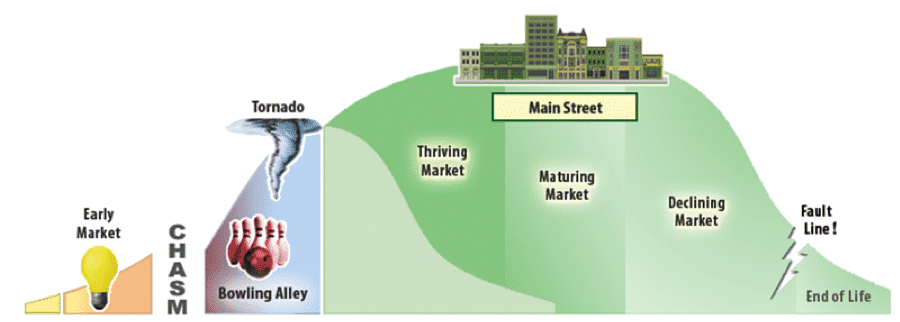Explore the World's Best Ideas
Join today and uncover 100+ curated journeys from 50+ topics. Unlock access to our mobile app with extensive features.
Pricing is a Critical Choice
The hardest part of startups is making choices. Not decisions but choices. A choice is a decision between alternatives, whereby deciding to do one thing you are also deciding not to do another. Pricing strategy selection is a choice. Or at least it should be.
Compared to the other work you need to do on pricing, however, choosing a pricing strategy is actually pretty easy.
14
109 reads
Setting The Price: Three Steps
- Set goals and make sure the pricing goals align with the larger business strategy.
- Understand how you create value for different market segments (consider economic, emotional and community value).
- Figure out your value metric and find a pricing metric that tracks the value.
Value metric: the unit of consumption by which your users get value.
Pricing metric: the unit of consumption that your buyers pay for.
14
63 reads
The Three Pricing Strategies
Grow: Setting a low price, leaving most of the value in the hands of your customers, shutting off margin from your competitors.
Skim: Initially setting a relatively high price to reinforce your value and capture the profit you need to invest in more innovation.
Follow: Setting price based on your largest competitor or a dominant input so that you track changing market conditions.
16
36 reads
The Follow Strategy
The Follow strategy needs a bit more explanation. This used to mean finding a dominant competitor and setting prices at a premium or discount to their price (in practice usually the latter).
In some industries, there is a dominant input that has a big impact on value propositions.
In others, it is the interest rate—pricing strategies for solutions for financial services companies are very dependent on interest rates. The price that makes sense in a low-interest-rate environment can be very different from what works in a high-interest rate environment.
14
25 reads
Pricing Strategies for Startups
- Adopt a grow pricing strategy when market share (first mover advantage) is the most important thing about your market. Keep in mind you will need to raise a lot of money to win.
- Adopt a skim or premium strategy when you have a compelling value differentiation and have identified a well-defined and relatively small market entry segment.
- Adopt a market following strategy when there is a dominant incumbent that you are going to be compared to, or if there is some input that determines the value of your offer.
15
26 reads
Constraints on Pricing Strategy
- Your price makes a statement about your brand. You cannot claim a premium brand and pursue a grow pricing strategy. And a discount brand cannot pursue a skimming strategy.
- Market Following strategies are the most difficult to execute. You have to be in close touch with the market, be able to change prices quickly, and be able to communicate the logic of the price change, and why the price change is in the customer’s interest.
- You can only have one pricing strategy per segment. Even if you have multiple segments you can probably only afford to have one strategy.
15
23 reads
The Evolution of Your Pricing Strategy
Pricing strategy can change as you move across Geoffrey Moore’s technology adoption cycle (see B2B Pricing Black Magic). As you move from Early Adopters to Bowling Alley to Tornado you may want to change your pricing strategy at each phase.
Companies buy for different reasons at each phase and pricing strategy needs to reflect this. Innovators are looking at things because they are cool. They are not real buyers. They are important, as Early Adopters tend to follow innovators and are influenced by them.
15
25 reads
Early Adoptors
Early Adopters buy because the solution gives them a competitive advantage. They expect to pay a premium and are not persuaded by discounts. In the Bowling Alley, people are buying because their peers are buying. This is a critical phase as it is when the market gets framed and anchor prices are set. Be very careful about using a grow strategy here (low prices) as you can do long term damage.
14
21 reads
Pricing Strategy Checklist
- I have aligned pricing goals with the overall strategy.
- I have a focused target segment.
- I understand what factors determine profit and loss in my target segment.
- I understand the pricing metrics used by the alternatives (competitors or other options customers have).
- I have chosen a pricing metric that tracks value for the segment I am targeting.
- I have checked to see if my pricing metrics are obsolete and no longer track value.
- I know what my brand represents.
- I have a Grow, Skim, or Market Following strategy.
- My pricing strategy is aligned with the phase of the technology adoption cycle.
15
28 reads
IDEAS CURATED BY
"Yeah, I'm a thrill seeker, but crikey, education's the most important thing. " ~ Steve Irwin
Jenna Sanderson's ideas are part of this journey:
Learn more about strategy with this collection
How to balance flexibility and structure in a hybrid team environment
Understanding the challenges of managing a hybrid team
How to maintain team cohesion
Related collections
Similar ideas
8 ideas
6 Different Pricing Strategies: Which Is Right for Your Business?
quickbooks.intuit.com
4 ideas
4 ideas
How to Win in Business With the Right Pricing Strategy
buzzedison.medium.com
Read & Learn
20x Faster
without
deepstash
with
deepstash
with
deepstash
Personalized microlearning
—
100+ Learning Journeys
—
Access to 200,000+ ideas
—
Access to the mobile app
—
Unlimited idea saving
—
—
Unlimited history
—
—
Unlimited listening to ideas
—
—
Downloading & offline access
—
—
Supercharge your mind with one idea per day
Enter your email and spend 1 minute every day to learn something new.
I agree to receive email updates







